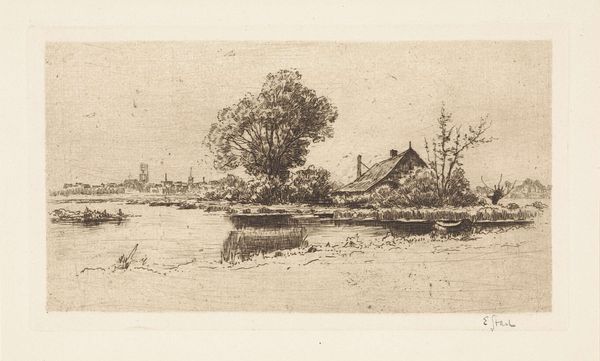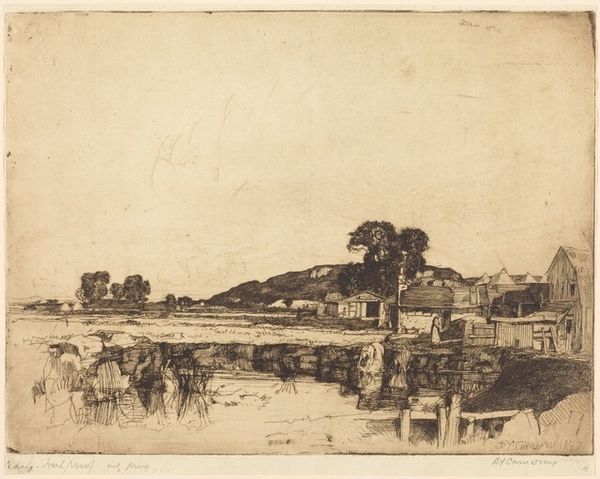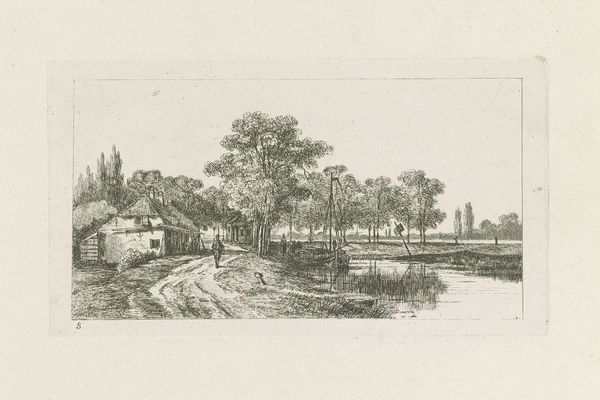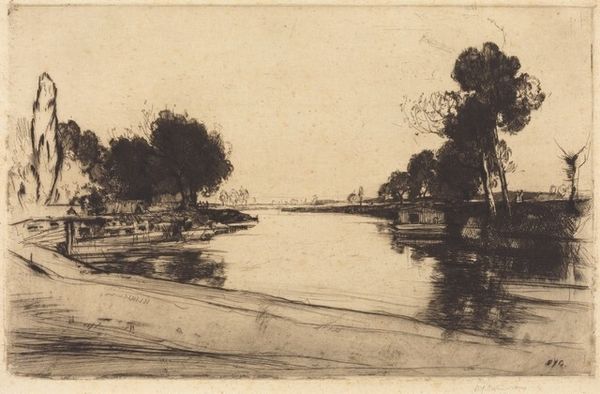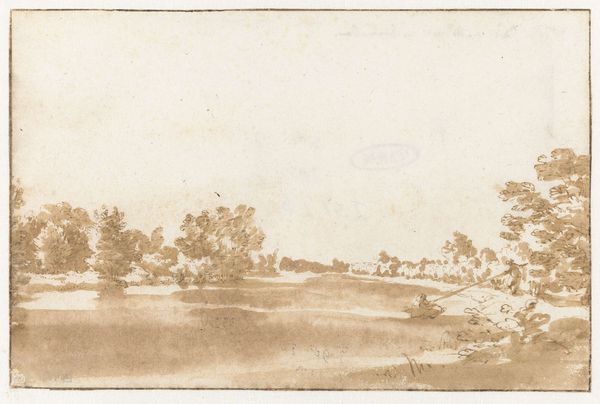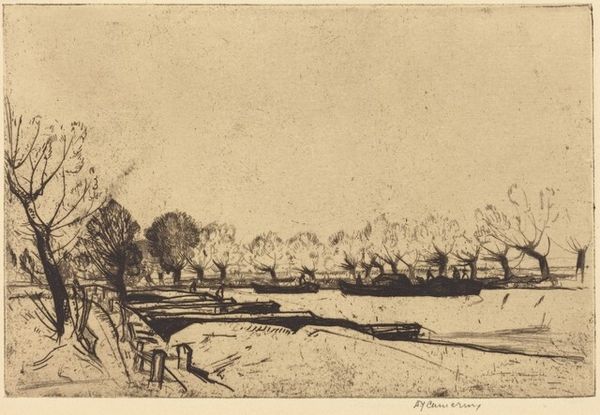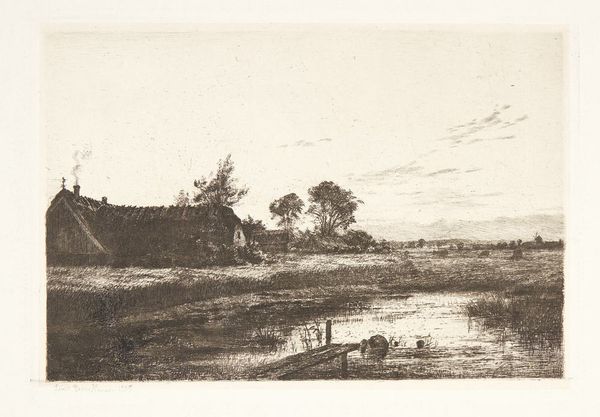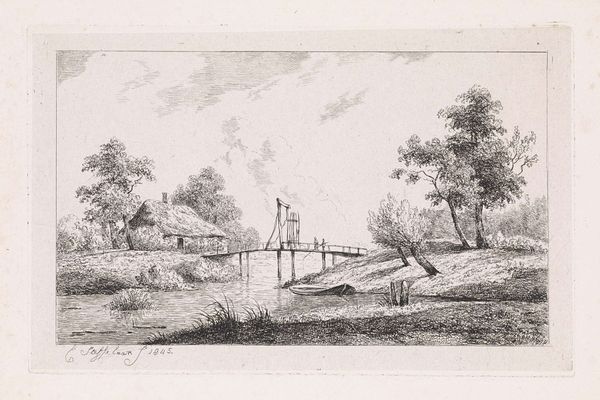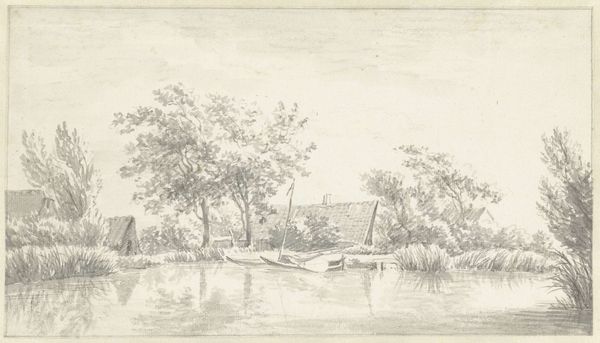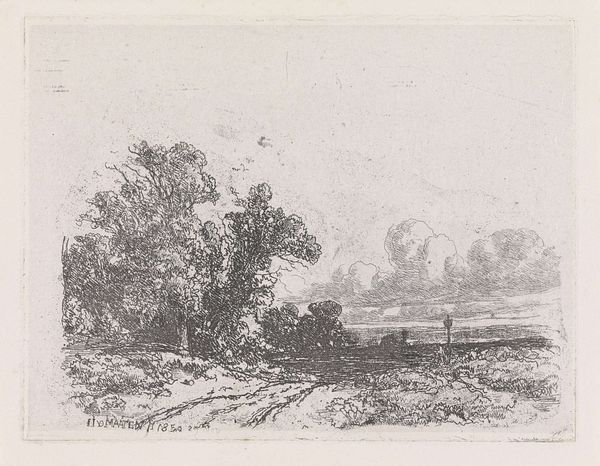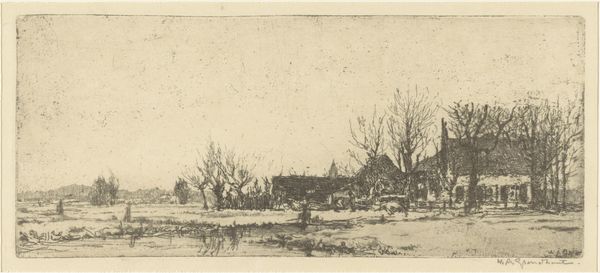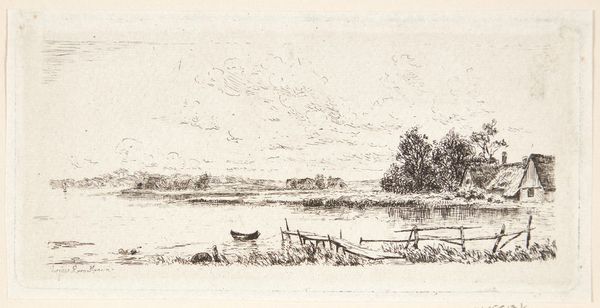
Copyright: National Gallery of Art: CC0 1.0
David Young Cameron created this etching, Lecropt, in 1895. It depicts a rural scene that reflects the late 19th-century interest in idealized landscapes. Cameron was working at a time when the art world was increasingly commercialized. Etchings like this were popular among collectors, and artists like Cameron found a market for these kinds of idyllic, romanticized scenes of the countryside. This image presents a view of rural life that is orderly and picturesque, far removed from the realities of agricultural labor and social change in Scotland at the time. The scene is viewed from an elevated position, offering a sense of control and detachment. It invites viewers to consume a particular vision of Scottish identity rooted in notions of tradition. To understand the full implications of this image, we might turn to sources like agricultural records, social surveys, and economic data from the period. These would help us to contextualize the work in its complex social and institutional setting.
Comments
No comments
Be the first to comment and join the conversation on the ultimate creative platform.
